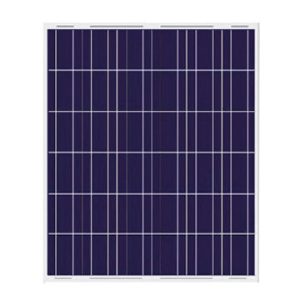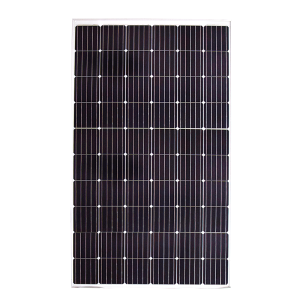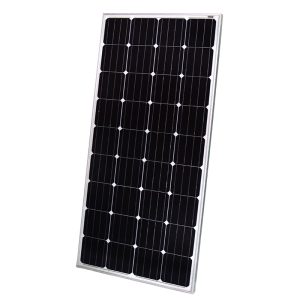Solar charging kits provide a simple way to harness the power of the sun to generate electricity for charging batteries or small devices. A basic solar kit consists of one or more photovoltaic solar panels, wiring to connect components, a charge controller or regulator, and, in some cases, a small battery for energy storage. Kits are sold in a range of wattages, from less than 20 watts up to 100 watts or more.
How do solar charging kits work?
The solar panels in the kits contain photovoltaic cells made from materials like monocrystalline silicon or thin-film amorphous silicon. When sunlight shines on these cells, the energy knocks electrons free, allowing them to flow and produce DC current and voltage.
The solar panels connect to a charge controller or regulator, which regulates the power going to the battery to prevent overcharging. Many smaller kits do not include a full charge controller but rather a simpler voltage regulator. The charge controller is an important component for properly charging and maintaining the battery.
Once charged, the battery can then be used as a power source for LED lights, phones, and other small electronics. Larger systems with higher-wattage panels can also power larger devices.
Key Factors When Selecting a Solar Charging Kit
There are several key factors to consider when selecting a solar charging kit:
- Wattage: The power output rating of the included solar panel(s) determines how much energy can be produced. Power is measured in watts, so a 45-watt solar kit will produce more power than a 20-watt kit.
- Battery Size: The battery capacity needed depends on your intended use. For occasional small device charging, a small 7–12 AH battery may suffice. For more consistent power demands, choose a larger deep-cycle battery.
- Charge Controller: A charge controller regulates the charging process to prevent battery damage. Kits without a proper controller tend to have issues with overcharging or undercharging. Spending a little more for an MPPT controller provides enhanced efficiency.
- Durability: Check solar cell and casing material quality, weather sealing, and estimated lifespan. Thin-film amorphous silicon cells may only last 5 years or less. Lifespans of 15–25 years are achievable with better construction.
- Expandability: Consider if you can easily expand the kit later by adding more panels or batteries. Component ratings and wiring should support expansion possibilities.
Practical Applications for Small Solar Kits
While home or off-grid system requirements typically demand larger solar arrays with inverter-tied configurations, compact solar charging kits have some unique practical applications:
- Outdoor/Portable Power: For camping, RVs, boats, or other transport, a self-contained solar kit keeps batteries charged to run lighting, phones, and electronics.
- Charging in Remote Locations: In rural areas, worksites, or locations with an unreliable grid, solar kits provide a reliable charging solution when AC power access is limited.
- Education/DIY Testing: Affordable, smaller kits offer a means for DIY enthusiasts to learn about solar energy concepts and experiment with component configurations.
- Emergency/Backup Power: Solar kits with battery storage provide a renewable backup source for essential devices during outages.
- Low-Power DC Appliances: Compact 12V DC appliances like fans, pumps, or refrigeration can be powered directly from batteries charged via solar.
What to Look Out for When Buying Solar Charging Kits
While small solar charging kits can serve unique purposes, buyers should be aware of some potential issues with lower-cost kits:
- Overstating Capabilities: Some kits may promise more than they can reasonably deliver in terms of charging capacity, battery lifespan, or overall durability.
- Insufficient Wiring: Low wiring gauges and cheap plastic connectors can cause excessive voltage drops and connectivity problems.
- Lack of Protection: Missing or low-quality charge controllers and system fuses can lead to battery damage and safety issues over time.
- Overpricing – Given their components and capabilities, some kits offer very little value per watt compared to DIY builds or commercial panels.
Performing research and setting realistic expectations is key to finding a solar kit to suit specific needs. While still an emerging market in many regions, solar power technology continues to advance in efficiency and affordability at a rapid pace.
Top Solar Kit Recommendations
Based on the above factors and capabilities, the following solar charging kits earn top recommendations in their respective wattage tiers from solar experts:
- Budget/Beginner – Renogy Eclipse 20W Kit
- All-Purpose Value – Mighty Max 50W Kit
- Off-Grid Cabins – WindyNation 100W Cabin Kit
- Heavy-Use Reliability – Renogy 200W Adventure Kit
Renogy and WindyNation kits in particular stand out for their component quality and durability, charge controller protections, technical support access, and overall value per watt. They offer proven reliability for off-grid and emergency power needs.
Professional Guidance Pays Off
For those new to solar systems, investing in professional guidance from installers or specialists can pay dividends in the long run. Experts help appropriately size components, maximize efficiency, and identify potential issues that may impact performance or safety. They also ensure electrical codes and standards are met, preventing potentially hazardous DIY mistakes.
Solar Charging Kit Considerations
In summary, solar charging kits provide a flexible means to leverage renewable solar energy for various battery charging applications, whether mobile, off-grid, or emergency backup needs. Carefully evaluating factors like wattage, battery size, charge regulation, durability, and protections when selecting a kit helps ensure it can meet expectations and serve intended purposes.



